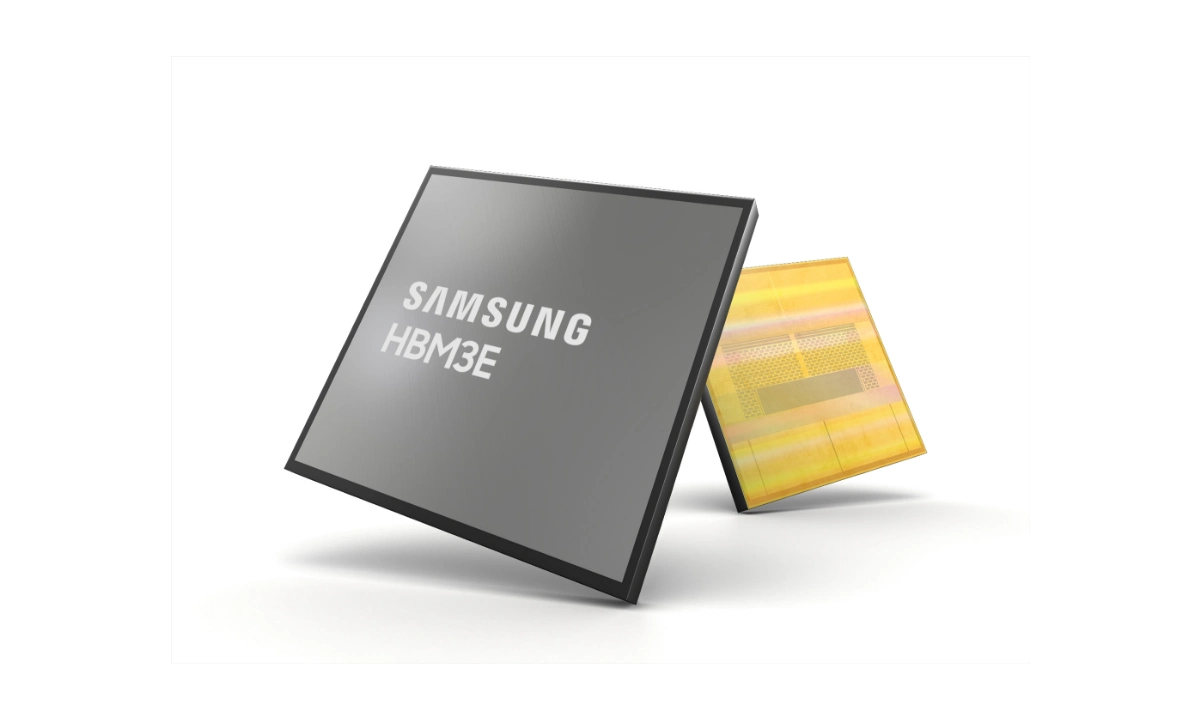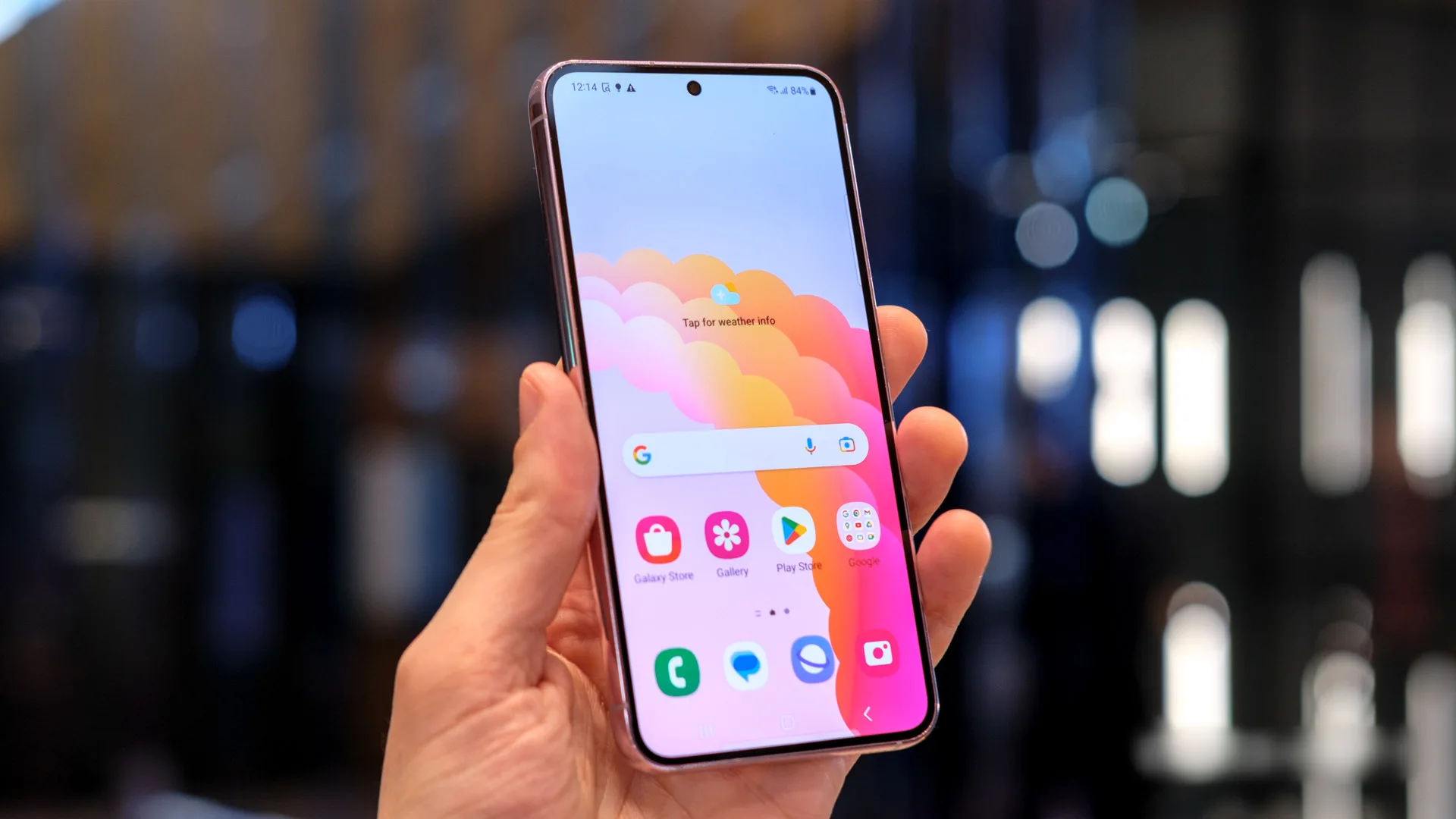News
Samsung Introduces Shinebolt HBM3E Memory Technology

A global leader in cutting-edge memory technology, Samsung Electronics hosted its yearly Memory Tech Day today, displaying new memory products and industry-first breakthroughs to propel technical developments in a range of future applications, such as cloud computing, edge devices, and automotive technology. The keynote talk of Samsung Electronics’ President and Head of Memory Business, Jung-Bae Lee, focused on the company’s plans to innovate novel transistor architectures and materials in order to meet the difficulties of the hyperscale era.
Aiming to “reimagine memory,” the event, which drew in around 600 customers, partners, and industry insiders, gave Samsung officials an opportunity to elaborate on the company’s long-term strategies. LPDDR5X CAMM2, Detachable AutoSSD, and HBM3E Shinebolt are just a few of the new product developments that the business has unveiled. For instance, in order to enable greater single-chip capacities that potentially surpass 100 gigabits (Gb), Samsung is now developing novel 3D architectures for DRAM manufactured on a sub-10-nanometer (nm) technology.
Samsung has started mass-producing its 12nm-class DRAM in May 2023. Now, the company is developing its next-generation 11nm-class DRAM, which will have the greatest density in the market. Further advancements in NAND flash are being made to reduce cell sizes and improve channel hole etching methods, which will lead to the introduction of 1,000-layer vertical NAND (V-NAND). Samsung’s ninth-generation V-NAND, which uses a double-stack structure, is expected to be completed in time and offer the most layers in the market. In order to begin mass manufacturing next year, the business has obtained a working chip for the new V-NAND.
Revelation of the HBM3E ‘Shinebolt’:
- Building on its success in launching the HBM2 market and enabling high-performance computing (HPC) with its first commercial HBM2, HBM3E Shinebolt DRAM was unveiled.
- By lowering the total cost of ownership (TCO) and accelerating AI-model training and inference in the data center, it will enable next-generation AI applications.
- With a 9.8 gigabits per second (Gbps) per pin speed, the HBM3E is able to attain transfer rates of 1.2 terabytes per second (TBps).
- Samsung is already producing large quantities of its 8H and 12H HBM3 models, with product samples being shipped.
- Also included were the first 32Gbps GDDR7 in the market, the petabyte-scale PBSSD that significantly increases server application storage capacity, and the 32Gb DDR5 DRAM with the largest capacity in the business.
Along with the industry’s first 7.5 Gbps LPDDR5X CAMM21, the company also demonstrated its 9.6 Gbps LPDDR5X DRAM, LLW2 DRAM designed specifically for on-device artificial intelligence, next-generation Universal Flash Storage (UFS), and the high-capacity Quad-Level Cell (OLC) SSD BM9C1 for PCs.
Samsung’s Exynos chips: Worth the trade-off for longer software support?
Samsung unveiled its Detachable AutoSSD, a virtual storage solution that enables data access from a single SSD to many SoCs. With a 4 TB capacity, the detachable AutoSSD may provide sequential read speeds of up to 6,500 megabytes per second (MBps). The SSD’s removable physical factor facilitates upgrades and modifications for both car makers and customers. Also available are automotive memory options with smaller package sizes, namely LPDDR5X and high-bandwidth GDDR7.
Technology that makes technology sustainable
Samsung’s semiconductor division will aim to achieve this goal by working with stakeholders across the semiconductor value chain, including customers and partners. The business intends to secure ultra-low-power memory technologies that can lower power consumption in PCs, mobile devices, and data centers. It also seeks to lessen its carbon impact by employing recycled materials in portable SSD goods. Samsung’s next-generation technologies, such as the PBSSD, will enable server systems to use less energy while maximizing rack capacity and space efficiency.
News
New Galaxy Phone In Existence: Samsung Galaxy M35 5G Spots On Geekbench

The Korean brand – Samsung has recently announced its two mid-range Galaxy smartphones – Galaxy A55 5G and Galaxy A35 5G. A new benchmark listing has a spot for Samsung’s affordable smartphone, Galaxy35 5G.
Samsung is now gearing up for its next affordable Galaxy smartphone, the M35 5G, as the reports are unvunveilhey have found a new benchmark listing for Samsung the Galaxy M35 5G.
The smartphone has been spotted with the model number as an identification code – SM-M356B on the Geekbench 6.2.2 database. Not only this, but it also confirmed the presence of 6GB of RAM and Android 14 OS. The chipset also came to know which is the latest Exynos 1380.
The codename for the motherboard is also mentioned, which is ‘s5e8835.’ The reports say that it has scored 656 and 1967 points in performance scores on the benchmarking platform. Exynos 1380 is the latest chipset of the Korean brand, which is a 5 nm processor. It consists of 4 Cortex A78 cores, which clock at 2.4GHz, and 4 Cortex A55 cores, which clock at 2.0GHz. It is coupled with a Mali g68 MP5 GPU. It also has an AI Engine.
This also offers connectivity options, which include the latest Bluetooth version 5.3 and Wi-Fi 802.11 ax with three bands. It supports a camera resolution of at least 200MP for capturing images, and for video recording, there is support for up to 30fps 4K recording. The storage supported is UFS v3.1, and RAM will be of the LPDDR4x/5 type.
Samsung has recently debuted its two smartphones, Galaxy A55, and Galaxy A35; the Galaxy A35 5G smartphone is powered by Exynos 1380 chipset. From this perspective, Galaxy M35 5G could be a variant of Galaxy A35.
At the moment, no specs and features of the device have been revealed or leaked. Still, since Galaxy M series smartphones usually have a bit higher battery power of at least 6000mAh, the forthcoming Galaxy M35 5G smartphone also arrives with the same battery power.
Firmware
Verizon rolls out the March 2024 security patch update for the Galaxy Z Fold 3 and Galaxy Z Flip 3 devices

Verizon has rolled out the March 2024 security patch update for the Galaxy Z Fold 3 and Galaxy Z Flip 3 devices. Earlier, these devices had received the same update outside the US, but now they are gradually expanding to the US.
The Galaxy Z Fold 3 and Galaxy Z Flip 3 are spotted getting new updates with the firmware version numbers F926USQS5HXBD and F711USQS6HXBD, respectively. It is worth noticing the update is currently available for the devices locked to Verizon, but it will soon be available on more carriers.
For your information, the latest update for Galaxy Z Fold 3 and Galaxy Z Flip 3 doesn’t bring any significant changes, but as it is the latest security patch, it will provide some internal fixes to maintain the security of the devices.
If you are getting some other issues from the last update, you should also update the device to the latest update, as it may also address some issues. Along with the update, other improvements may also be made to enhance the overall performance of the devices.
Suppose you use the Galaxy Z Fold 3 or Flip 3 device in the US. In that case, you can update the device to the latest version by simply going to the system settings and then to the software update. If you haven’t received the update, you should wait for some time, as it may arrive in the next few days.
Firmware
Samsung rolls out the March 2024 security patch update for the Galaxy S23 FE devices in the US

Samsung has rolled out the March 2024 security patch to almost all devices but still needs to complete the update distribution to all eligible devices. So, gradually expanding the update to remaining devices, the company has started rolling out the update for the Galaxy S23 FE in the US.
Notably, the Galaxy S23 FE devices are getting a new update in the carrier-unlocked version with the firmware version number S711U1UES2BXBF. The update has already been rolled out to almost all carriers, including AT&T, Bluegrass Cellular, C-Spire, Cellular South, Comcast, Cricket, DISH, MetroPCS, T-Mobile, Tracfone, US Cellular, Verizon, and Xfinity Mobile.
According to the official changelog, the March 2024 security patch is one of the standard maintenance updates that provides some internal improvements for the device, and there will be no visible changes available. In other words, users may experience some improvement in the functioning of devices, but it doesn’t particularly bring any specific changes for the device.
Going to the details, the March 2024 security patch includes more than 40 fixes, 37 of which are provided by Google and address the issues found in the Android OS, while 9 more features are introduced by Samsung that enhance the performance of Galaxy devices exclusively.
Suppose you are using the Galaxy S23 FE in the US. In that case, you can update the devices to the latest version by following the simple steps: first, go to the system settings, tap on the software update, and tap on the download and install button; if it shows a new update available, tap on the download button.












